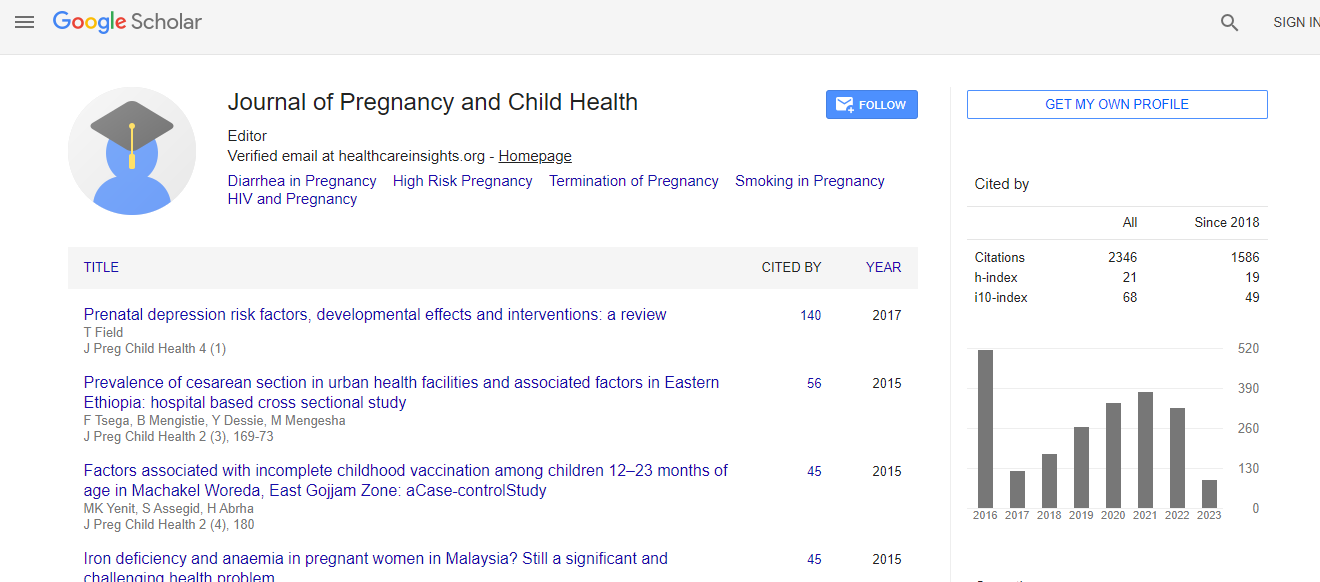Research Article
Frequency of Retinopathy of Prematurity in a Tertiary Care Hospital
Shiyam Sunder Tikmani1, Tufail Soomro2* and Prashant Tikmani3
1Department of Community Health Sciences, Aga Khan University, Karachi, Pakistan
2Department of Pediatrics Ghulam Mohammad Mahar Medial College, Sukkur, Pakistan
3Shaheed Zulfiqar Ali Bhutto Institute of Science and Technology, Karachi, Pakistan
- *Corresponding Author:
- Tufail Soomro
Department of Paediatrics
Ghulam Mohammad Mahar Medical College
Sukkur, Pakistan
Tel: 923337279661
E-mail: drtufailsoomro@hotmail.com
Received date: July 30, 2015; Accepted date: October 21, 2016; Published date: October 25, 2016
Citation: Tikmani SS, Soomro T, Tikmani P (2016) Frequency of Retinopathy of Prematurity in a Tertiary Care Hospital. J Preg Child Health 3:285. doi:10.4172/2376-127X.1000285
Copyright: © 2016 Tikmani SS, et al. This is an open-access article distributed under the terms of the Creative Commons Attribution License, which permits unrestricted use, distribution and reproduction in any medium, provided the original author and source are credited.
Abstract
Introduction: Retinopathy of prematurity (ROP) is one of a preventable cause of blindness in neonates. Screening of preterm infants for ROP in Pakistan is currently under-recognized. The aim of this study was to determine the frequency of retinopathy of prematurity (ROP) in premature and very low birth weight neonates (birth weight ≤ 1500 g and gestational age ≤ 32 weeks) in a tertiary care hospital, Karachi, Pakistan. Methods: This was a cross-sectional study carried out in the neonatal intensive care unit (NICU) of Civil Hospital Sukkur from 1st June 2014 to 17th June 2015. Preterm neonates with birth weight ≤ 1.5 Kg and gestational age of ≤ 32 weeks were referred for ROP eye examination as an outpatient were included in the study after taking consent from parents. Premature neonates with major congenital malformations, chromosomal anomalies or congenital cataract or tumours of the eyes or those who died before eye examinations or did not attend the out-patient department for eye examination were excluded. Eye examination for ROP was performed on all infants, at 4 to 6 weeks chronological age, by a trained ophthalmologist, having at least 10 years of relevant experience. Results: A total of 86 babies enrolled in the study. Of them, 46 (53.5%) were male and 58 (67.4%) babies were 4 weeks old. ROP was identified in 9 (10.5%) neonates at the first eye examination. ROP was significantly associated with birth weight (p-value 0.031), gestational age (p-value 0.033) and chronological age (p-value<0.001). Conclusion: It was concluded from this study that frequency of ROP was 10.5%. ROP is significantly associated with birth weight, gestational age, and age of the infant.

 Spanish
Spanish  Chinese
Chinese  Russian
Russian  German
German  French
French  Japanese
Japanese  Portuguese
Portuguese  Hindi
Hindi 
